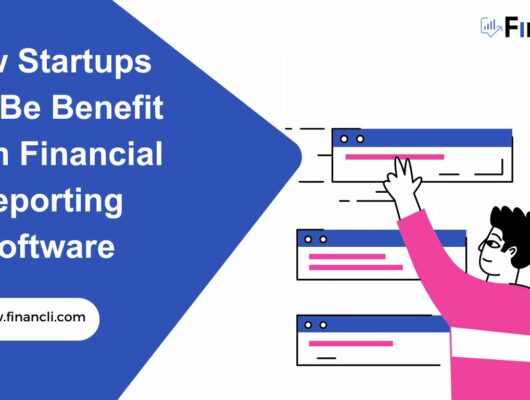Expansion Revenue
The expansion revenue metric measures the additional revenue generated from existing customers who make additional purchases or upgrade their purchases to higher-value products or services. This metric helps businesses understand how much revenue they generate from their existing customer base beyond their initial purchase or subscription. In addition, it tracks the success of retention and upsells strategies. As a result, businesses can use this metric to identify areas for improvement in customer retention, cross-selling, and upselling strategies, and overall customer satisfaction.
Expansion Revenue Formula
The formula is as follows:
Expansion Revenue = Total Revenue from Existing Customers – Revenue from Previous Period
To calculate, you first need to determine the total revenue generated from existing customers in the current period. This can include revenue from upsells, cross-sells, renewals, and any other additional purchases made by existing customers.
Next, you need to determine the revenue generated from the same set of customers in the previous period. This is the outcome after subtracting the revenue from new customers in the current period from the total revenue in the current period.

Finally, subtract the revenue generated in the previous period from the total revenue generated in the current period to get the expansion revenue.
Let’s say a company had total revenue of $100,000 in Q1 2022, with $60,000 coming from existing customers and $40,000 from new customers. In Q2 2022, the company had total revenue of $120,000, with $80,000 coming from existing customers and $40,000 coming from new customers.
To calculate the expansion revenue, we first need to determine the revenue generated from existing customers in each period:
Q1 2022 Total Revenue from Existing Customers = $60,000
Q2 2022 Total Revenue from Existing Customers = $80,000
Next, we need to determine the revenue generated from new customers in each period:
Q1 2022 Revenue from New Customers = $40,000
Q2 2022 Revenue from New Customers = $40,000
Now we can use the formula:
Expansion Revenue = Total Revenue from Existing Customers – Revenue from Previous Period
Expansion Revenue for Q2 2022 = $80,000 – ($60,000 – $40,000) = $80,000 – $20,000 = $60,000
Therefore, the expansion revenue for Q2 2022 is $60,000. This indicates that the company generated $60,000 in additional revenue from existing customers who made additional purchases or upgrades compared to the previous period.
Importance of Expansion Revenue in SaaS
Expansion revenue is particularly important for SaaS (Software as a Service) companies, as it is a crucial driver of their growth and profitability. Here are some reasons why expanded revenue is essential for SaaS:
- High customer acquisition costs: Acquiring new customers in the SaaS industry can be expensive due to the need for marketing, sales, and customer support efforts. Expansion revenue from existing customers can offset these costs and increase the overall profitability of the business.
- Retention: Expansion revenue is a measure of customer retention, as it shows that existing customers are satisfied with the product and are willing to continue using it or even upgrade to higher-value plans. High retention rates are significant for SaaS businesses to maintain a predictable revenue stream.
- Upsell opportunities: SaaS companies often have multiple subscription tiers or add-on features that customers can purchase, providing ample opportunities for upselling to existing customers. By focusing on expansion revenue, SaaS companies can prioritize these upsell opportunities and increase their revenue per customer.
- Customer lifetime value: Expansion revenue is a crucial driver of customer lifetime value (CLV) in SaaS. By increasing the revenue generated from each customer over time, the CLV increases, providing a clearer picture of the actual value of each customer to the business.

In summary, expansion revenue is a crucial metric for SaaS companies to track as it can indicate the potential for growth and increased profitability from existing customers. By focusing on expanding revenue, SaaS companies can improve retention rates, identify upsell opportunities, and increase the overall value of their customer base.
Drawbacks
While expansion revenue can be a useful metric for businesses, there are also some drawbacks to consider. Here are a few:
- Limited focus on acquiring new customers: Focusing solely on expanding revenue can lead to a lack of attention on acquiring new customers. While retaining and growing existing customers is important, bringing in new customers is also critical for long-term growth and sustainability.
- Difficulty accurately measuring revenue sources: Calculating built-up revenue can be challenging as it requires separating revenue generated from existing customers from new customers. This can be difficult to do accurately, especially if a business has a large customer base or a complex sales process.
- Can be impacted by external factors: Expansion revenue can impact by external factors such as economic conditions or changes in the market. For example, during a recession, customers may be less likely to upgrade their subscriptions or make additional purchases, which can negatively impact built-up revenue.
- Can be affected by customer churn: Expansion revenue assumes that existing customers will continue to use the product or service and make additional purchases. Therefore, built-up can negatively impact if customers churn or stop using the product.
In summary, while expansion revenue can be a valuable metric for businesses, it is important to consider other metrics such as customer acquisition costs, retention, and overall revenue growth.
What is an Ideal Expansion Revenue?
There is no one-size-fits-all answer to what an ideal expansion revenue is, as it varies depending on the business model, industry, and stage of growth. However, a general rule of thumb is that a healthy built-up revenue should outpace customer churn and new customer acquisition costs.
For SaaS businesses, a good benchmark is to aim for an expansion revenue rate of at least 20%. This means that for every dollar of revenue generated from existing customers in a given period, the business should aim to generate at least 20 cents of additional revenue from those same customers in the next period.

It is important to note that this is not a hard and fast rule and that built-up revenue rates can vary depending on the stage of growth and the business model. For example, some businesses may have lower expansion revenue rates but still, be profitable due to low customer acquisition costs. In comparison, others may have higher built-up revenue rates but struggle with high churn rates.
Ultimately, the ideal rate depends on the goals and objectives of the business, as well as the overall market conditions and competitive landscape.
What Metrics Compliment Expansion Revenue Metric?
Here are some metrics that can complement expansion revenue:
- Customer Acquisition Cost (CAC): CAC is the cost of acquiring a new customer, including marketing, sales, and other related expenses. By tracking CAC in conjunction with expansion revenue, businesses can understand the overall profitability of customer acquisition efforts.
- Customer Lifetime Value (CLV): CLV is the total value a customer expects to bring to the business over their lifetime. By tracking CLV in conjunction with expansion revenue, businesses can understand the overall value of their customer base and make strategic decisions about where to allocate resources.
- Churn Rate: The churn rate is the percentage of customers who stop using the product or service in a given period. By tracking churn rate in conjunction with expansion revenue, businesses can identify areas for improvement in their product or service and develop strategies to improve customer retention.
- Net Promoter Score (NPS): NPS is a measure of customer satisfaction and loyalty. By tracking NPS in conjunction with expansion revenue, businesses can understand how satisfied their customers are and make improvements to their products or service to increase customer loyalty.
- Monthly Recurring Revenue (MRR): MRR is the monthly revenue generated from recurring subscriptions or contracts. By tracking MRR in conjunction with expansion revenue, businesses can understand their customer base’s overall growth and identify improvement areas.
In summary, while expansion revenue is a crucial metric for SaaS companies, it works in conjunction with other metrics to provide a more comprehensive view of the overall health and growth of the business.
How to Increase Expansion Revenue?
Increasing expansion revenue is crucial for the growth and profitability of SaaS companies. Here are some strategies that businesses can use to improve their expansion revenue:
- Focus on customer success: Providing excellent customer service and support can improve customer satisfaction and increase the likelihood that customers will continue to use the product and make additional purchases. This can lead to increased expansion revenue over time.
- Upsell and cross-sell: Offering additional products or features to existing customers can effectively increase expansion revenue. By understanding customer needs and pain points, businesses can identify opportunities to offer complementary products or features that can add value and improve the customer experience.
- Implement pricing strategies: Pricing strategies such as tiered or usage-based pricing can incentivize customers to upgrade their subscriptions or make additional purchases, increasing expansion revenue.
- Improve product quality and user experience: Investing in product development and improving the user experience can increase customer satisfaction and lead to increased expansion revenue over time.
- Develop targeted marketing campaigns: Targeted marketing campaigns can help businesses reach customers with specific offers and promotions tailored to their needs and interests. This can increase the likelihood that customers will make additional purchases and increase expansion revenue.
- Offer annual or longer-term contracts: Offering annual or longer-term contracts can incentivize customers to use the product for a more extended period, leading to increased expansion revenue over time.

In summary, businesses can increase their expansion revenue by focusing on customer success, upselling and cross-selling, implementing pricing strategies, improving product quality and user experience, developing targeted marketing campaigns, and offering annual or longer-term contracts.
Companies Examples
There are many SaaS companies that have successfully implemented expansion revenue strategies to drive growth and increase profitability. Here are some examples:
- HubSpot: HubSpot is a marketing and sales software company offering various products and services to help businesses grow. They have implemented an expansion revenue strategy through upselling and cross-selling additional products and features to existing customers. As a result, HubSpot’s expansion revenue rate was 33% in 2020, meaning that for every dollar of revenue generated from existing customers, they generated an additional 33 cents of revenue from those same customers.
- Zoom: Zoom is a video conferencing software company that has experienced explosive growth over the past year due to the COVID-19 pandemic. They have implemented an expansion revenue strategy through pricing strategies such as usage-based pricing and upselling additional products and features to existing customers. In 2020, Zoom’s expansion revenue rate was 132%, meaning that for every dollar of revenue generated from existing customers, they generated an additional $1.32 of revenue from those same customers.
- Salesforce: Salesforce is a cloud-based customer relationship management software company that has been a leader in the SaaS industry for many years. They have implemented an expansion revenue strategy through upselling and cross-selling additional products and features to existing customers and offering annual and longer-term contracts to incentivize customer commitment. As a result, Salesforce’s expansion revenue rate was 14% in 2020.
- Atlassian: Atlassian is a collaboration software company offering various products and services to help teams work together more effectively. They have implemented an expansion revenue strategy through upselling and cross-selling additional products. As a result, Atlassian’s expansion revenue rate was 21% in 2020.
In summary, HubSpot, Zoom, Salesforce, and Atlassian are examples of SaaS companies that have successfully implemented expansion revenue strategies to drive growth and increase profitability.






